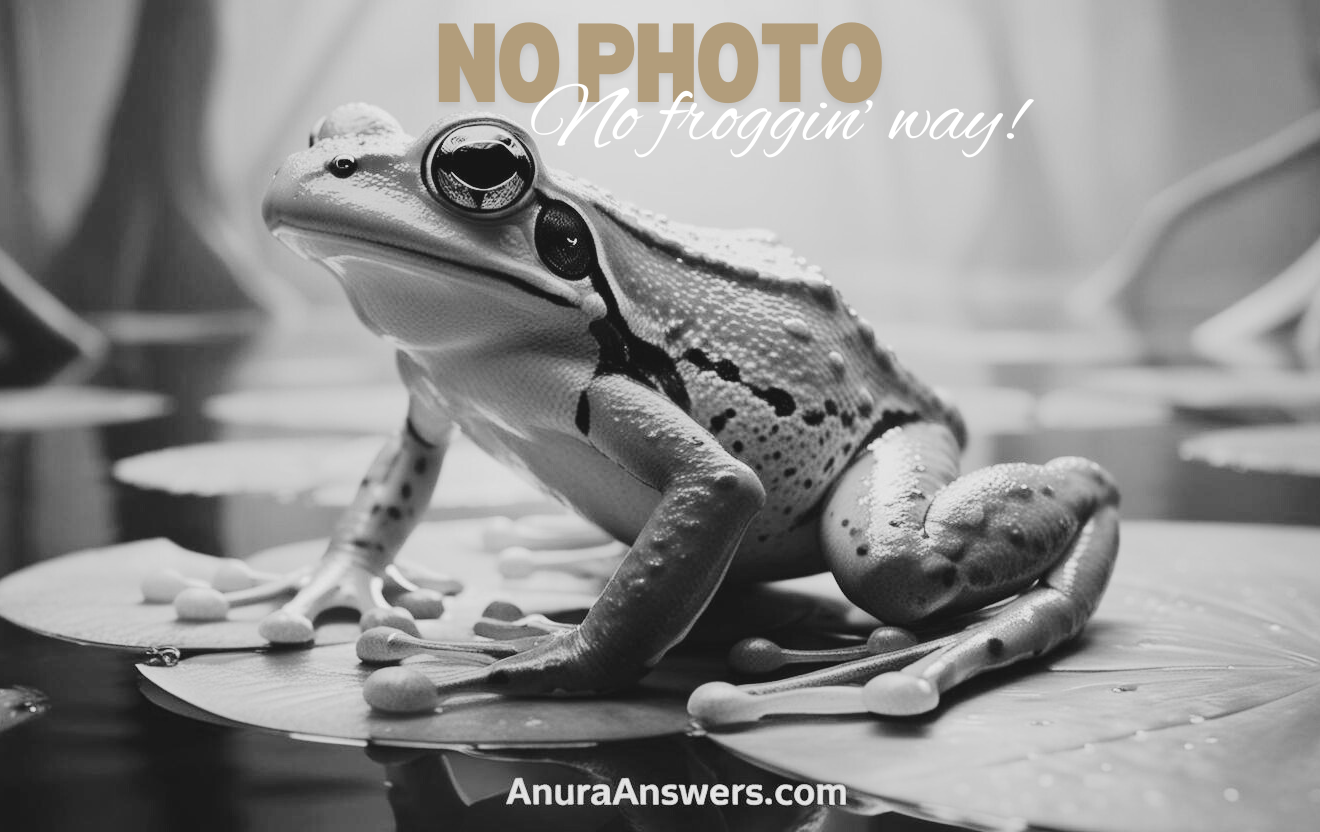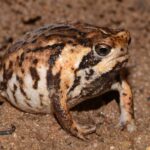- Arthroleptis Perreti: Unearthing the Secretive Life of a Remarkable Forest Frog
- Taxonomy and Classification: Identifying a Unique Amphibian Lineage
- Natural Habitat: A Lively Underworld Beneath Tropical Foliage
- Physical Characteristics: A Master of Camouflage and Adaptability
- Behavior and Life Cycle: The Hidden Rhythms of Forest Life
- Ecological Role: Guardians of Forest Balance
- Threats and Conservation Status: Protecting a Cryptic Guardian
- Cultural and Scientific Significance: Small Frogs with Major Impact
- Conclusion: Choosing to Protect the Hidden Wonders of Arthroleptis Perreti
Arthroleptis Perreti: Unearthing the Secretive Life of a Remarkable Forest Frog#
In the shadowed depths of Central Africa’s rainforest, concealed by a dense carpet of leaf litter and surrounded by the rhythmic hum of countless insects, lives a remarkable yet largely unnoticed creature—the Perret’s screeching frog (Arthroleptis perreti). While this elusive amphibian remains relatively obscure among the wider public, it holds vital keys to understanding ecological health and the delicate balance of tropical ecosystems.
Quietly fascinating and subtly beautiful, Arthroleptis perreti has evolved specialized characteristics that not only enable its survival in such a competitive habitat but also offer researchers crucial insights into biodiversity. Surprisingly cryptic and vocally distinctive, this small yet resilient frog demonstrates nature’s incredible adaptability. In this feature, journey alongside us as we uncover the intriguing life, ecology, and conservation of Arthroleptis perreti—a hidden marvel thriving unnoticed beneath Africa’s lush canopies.
Taxonomy and Classification: Identifying a Unique Amphibian Lineage#
Scientifically known as Arthroleptis perreti, this intriguing species belongs to the vast and ecologically vital family Arthroleptidae. Within this family, Arthroleptis perreti resides in the genus Arthroleptis, a diverse group encompassing small, direct-developing frogs often distinguished by their sharp, high-pitched vocalizations—earning them the ‘screeching frog’ nickname.
Named in recognition of the respected Swiss herpetologist Jean-Luc Perret, Arthroleptis perreti bears testament to his significant contributions to African amphibian research. This species was first formally described to the scientific community by Jean-Louis Amiet in 1971, immediately captivating herpetologists with its adaptability and peculiar ecological niche.
While sharing its genus with several African frog species, Arthroleptis perreti remains highly distinct, thanks to its unique morphological traits, specialized habitat preferences, and distinctive acoustic signatures. These defining attributes reinforce the frog’s scientific significance, a quiet yet critical piece of the ecological puzzle in Central Africa’s rainforests.
Natural Habitat: A Lively Underworld Beneath Tropical Foliage#
The story of Arthroleptis perreti unfolds across the expansive central African forests, particularly within the equatorial rainforest regions of Cameroon, Equatorial Guinea, and Gabon. Within its range, this species thrives in humid and shaded forest environments, predominantly inhabiting lower altitudes from 200 to about 1,000 meters above sea level. Its natural environment is rich, damp, and shadowed—characterized by dense forest canopies that filter sunlight into mosaic patterns on the forest floor.
The leaf-littered understory environment, preferred by Arthroleptis perreti, is intricately woven by the decay-accelerating humidity of tropical climates, forming a perpetual moist layer of organic detritus. This microhabitat is more than suitable; it is essential. The dampness ensures the frog’s permeable skin remains hydrated, and the close proximity to decomposing organic matter supports abundant insect prey. Fungus-coated roots, soft carpets of moss, and decaying wood furnish habitats brimming with potential nourishment.
Yet, this sheltered environment isn’t without challenges. Predators and competitors, weather fluctuations, and seasonal habitat changes place constant pressure on Arthroleptis perreti, prompting extraordinary evolutionary adaptation in this diminutive amphibian—one that equips it to thrive quietly beneath a bustling, predator-rich rainforest ecosystem.
Physical Characteristics: A Master of Camouflage and Adaptability#
With its diminutive size averaging only 20 to 35 millimeters, Arthroleptis perreti could easily go unnoticed to the casual observer. However, careful examination reveals an extraordinary set of adaptations crucial to survival in dense rainforest habitats.
Displaying shades of reddish-brown, earthy green, or mottled grey colorations across its rough, textured skin, the species effortlessly blends with the surrounding leaf litter, broken twigs, and moss-covered debris scattered across the rainforest floor. Small patterns of darkened spots and streaks further enhance this stealthy camouflage, enabling the frog to escape detection by both its prey and its predators.
The frog’s robustly built but compact body structure houses muscular hind legs and delicate, nimble forelimbs adapted expertly for jumping, burrowing, and navigating cluttered forest substrates. Large, expressive eyes positioned high atop its head provide excellent visual awareness—an essential feature in such a complex habitat. Beyond merely evading predators, these sophisticated senses aid in pinpointing prey swiftly and efficiently in low-light conditions.
The subtle yet distinctive variation among individual Arthroleptis perreti populations suggests a fascinating story of ecological adaptation, hinting at micro-evolutionary responses to their specific habitats. These physical features contribute not only to their stealthy survival but also underscore the unique evolutionary history this species represents.
Behavior and Life Cycle: The Hidden Rhythms of Forest Life#
Feeding Habits: Expert Hunters of Forest Insects#
Arthroleptis perreti is primarily insectivorous, pursuing an extensive variety of arthropods—ants, termites, small beetles, spiders, and other invertebrates that thrive within the lush, moisture-laden ecosystems. Relying predominantly on stealth and ambush tactics, Perret’s screeching frogs rest silently, well-hidden beneath layered leaves or within shadowed damp crevices. Quick reflexes, exceptional camouflage, and sharp eyesight position these frogs as stealth predators, swiftly capturing unsuspecting invertebrates with flicks of a sticky, agile tongue.
Breeding and Development: Evolving Independence#
A remarkable and ecologically significant aspect of Arthroleptis perreti’s behavior lies in their unique mode of reproduction. Unlike the familiar aquatic-dependent development cycle of most amphibians, Arthroleptis perreti engages in direct development—fully bypassing an aquatic tadpole phase. Eggs are laid beneath moist leaf litter or subterranean crevices. After a period of attentive incubation, juvenile frogs emerge carrying miniature versions of adult forms—fully adapted for terrestrial existence.
This evolutionary innovation allows Arthroleptis perreti to colonize habitats well beyond, and independently of, standing water—a significant adaptive advantage in the competitive rainforest ecosystem. Furthermore, bypassing aquatic stages mitigates predation pressures, resulting in increased chances of offspring survival.
Ecological Role: Guardians of Forest Balance#
Though diminutive, Arthroleptis perreti plays a critical ecological role within the Central African rainforest ecosystem. As both predator and prey, the frog contributes remarkably to the regulation and balance of insect populations, an unseen, tirelessly working guardian of ecological harmony. Simultaneously, they serve as vital prey sources for a diverse array of forest predators, from snakes to small mammals—adding essential depth to the rainforest food web.
As sensitive indicators of environmental change due to their absorption-prone skin and habitat specialization, the presence of Arthroleptis perreti can offer biologists significant insights into forest health, reflecting subtle climate changes, threats due to pollution, or other signs of ecosystem stress.
Threats and Conservation Status: Protecting a Cryptic Guardian#
Currently classified as Least Concern by the International Union for Conservation of Nature (IUCN), Arthroleptis perreti nonetheless faces encroaching threats to its survival. Rampant deforestation, expanding human settlements, illegal logging activities, agricultural land-use encroachment, and climate fluctuations collectively shrink and fragment habitats. Despite demonstrating certain ecological adaptability, sustained habitat degradation could jeopardize local population stability over time.
Fortunately, numerous local and international conservation initiatives actively strive to understand and protect this species through comprehensive research programs, sustainable land-use practices, and habitat restoration projects. Furthermore, the scientific community highlights this species as an important measure of forest well-being, advocating broader conservation action in Central Africa.
Cultural and Scientific Significance: Small Frogs with Major Impact#
Though perhaps not prominent in traditional folklore like many brighter-colored amphibians, Arthroleptis perreti remains a quietly admired subject among herpetologists internationally. Through extensive scientific research, it contributes invaluable data, enhancing knowledge of amphibian evolutionary biology, reproductive development, ecological interactions, and climate adaptability.
In essence, Arthroleptis perreti personifies the quiet wonder and importance hidden within nature’s less conspicuous inhabitants, decidedly proving heroic ecosystems often rest quietly beneath our feet.
Conclusion: Choosing to Protect the Hidden Wonders of Arthroleptis Perreti#
Our journey through the enigmatic life and critical importance of Arthroleptis perreti reinforces nature’s interconnectedness and inherent vulnerability. By valuing this subtle amphibian guardian, we actively preserve the delicate balance within the wondrous and complex ecosystems that envelop and sustain them. Let Arthroleptis perreti serve as an emblem that inspires deeper discovery, understanding, and active conservation—protecting the silent wonders beneath the grand rainforest canopies.










